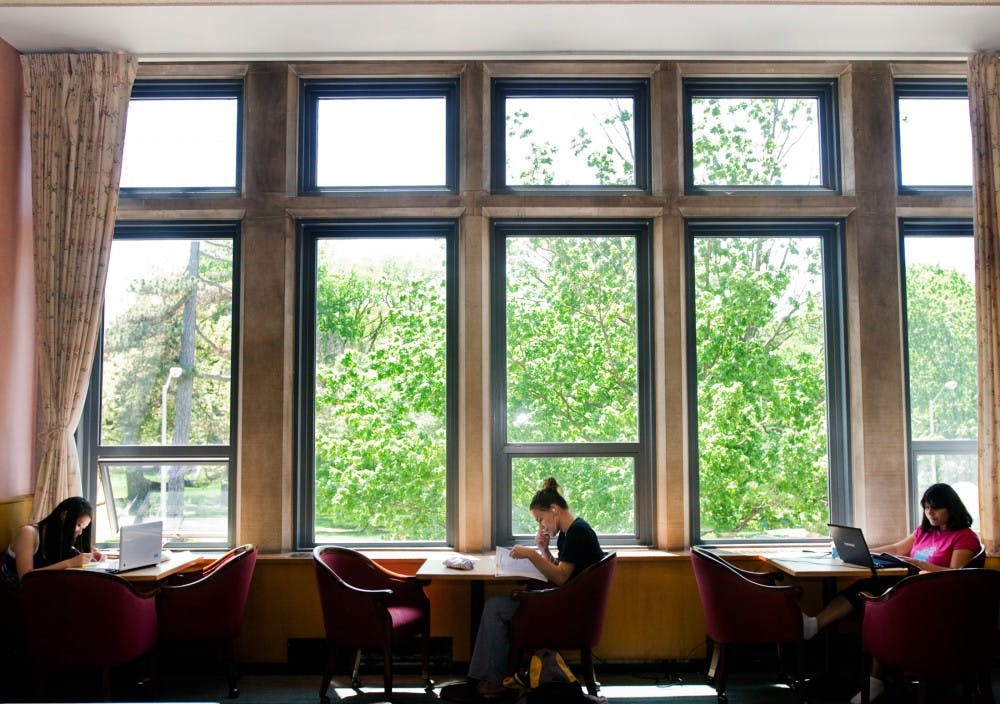There are very few places on MSU’s campus that aren’t open to everyone, but one of them is the Women’s Lounge inside the Union.
In 1925 when the lounge opened, there was a men’s lounge created as well, but sometime in the 1940s the student body voted to trade the lounge for another amenity, though the records aren’t clear as to what it was, Kat Cooper, the Union’s communications manager of auxiliary resources said.
“The school wasn’t particularly integrated, there weren’t many women students, so it was often used by wives of faculty members and housekeepers,” Cooper said. “Women needed to be moved into a more secure location and so there were dormitories created in the Union. In the ‘50s and ‘60s it was important for safety and the location was good because it was good to see if someone’s ride arrived.”
Cooper admits the Women’s Lounge isn’t the necessity it once was, but it remains a tradition of the Union.
Tina Timm, an assistant professor in the College of Social Sciences, feels the lounge is outdated.
“This will probably get me in trouble with my feminist friends but it doesn’t make sense to me to have that in this day in age,” Timm said. “If there was a lounge or study area specifically for men, I think there would be a lot of push back.”
Patricia Lowrie, director of the Women’s Resource Center, said the needs the lounge serves have changed with society.
Getting rid of the private space would be equivalent to saying women’s needs that are currently being served by the lounge are irrelevant, Lowrie said.
“Women’s needs now are certainly different now than they were in 1925,” she said. “But that does not mean that public space is the appropriate space to serve those needs.”
Libbey Siegel recently graduated from the MSU College of Law and has been using the lounge to study for the bar exam.
“I would say that it’s nice because it’s quiet, and everyone that goes in there understands that that’s what it’s for,” Siegel said. “People use it for quiet space and today I saw a woman that was feeding a baby so she used it for that purpose as well.”
Despite the improvements in campus equality, Lowrie still feels the lounge serves an important function as a safe place for women.
Environmental geosciences senior Aiman Shahpuiwala said safety is one of the major reasons she goes there.
“I feel like I can take a nap in there and I don’t have to worry about my stuff getting stolen,” Shahpuiwala said. “I think it’s pretty safe.”
But opening the lounge to men has been a topic of debate dating back to 1978 when Bruce Guthrie, a history and economics senior, filed a complaint after entering the lounge and being asked to leave.
His complaint went on to be dismissed by the by Michigan Civil Rights Commission in Detroit in 1980, Cooper said.
Lowrie said she has yet to hear of male needs that could be satisfied by a lounge.
“If it’s a conversation that if women have one, men should have one too, that’s not a productive conversation,” she said. “This is not about equity. It is about serving the broader needs of various constituent groups around the campus.
“If there is an unmet male need across the campus then certainly we should be having conversations.”
Zachary Derade, a genomics and molecular genetics sophomore, recognizes the past needs the lounge served, but wasn’t sure if it currently unites more than divides, especially when considering transgender students, whose gender classification isn’t as simple as male or female.
Support student media!
Please consider donating to The State News and help fund the future of journalism.
In the end, Derade said keeping the Women’s Lounge is probably best, although a new concept might be worth considering.
“I think ultimately I would support having a women’s lounge, just because I think there are fights that women are still having,” he said. “But at the same time I feel that separating women from men, can be detrimental from the fact that they are separated. I think finding something more inclusive would be a better idea.”
Discussion
Share and discuss “Union's Women's lounge shifts roles in society ” on social media.






